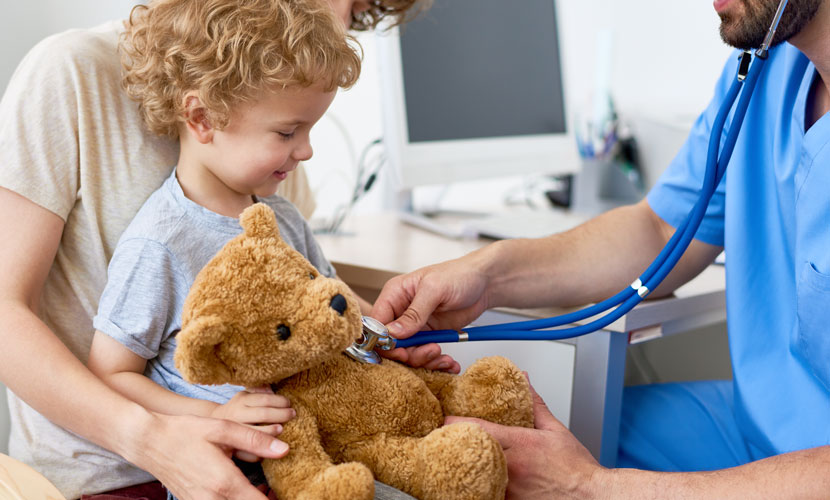While there is no one right way to raise a child, as a parent, you want to do what’s best. And nowadays, with the volume of information available, it can be hard to decipher what’s true, what’s false, what’s essential and what’s not.
Dr. Jason Prostrollo, a pediatrician, believes it doesn’t need to be so complicated — and that it really comes down to a handful of best practices. He gave us his advice on the six main areas he feels parents should focus on in order to raise healthy children.
1. Develop a strong relationship with your primary care provider.
This includes making sure you bring your child in for regular check-ups. Under the age of 3, there are many, many well-child visits recommended to ensure the doctor can catch any developmental delays, growth or nutrition issues, safety concerns or anything else that could impact your child’s overall development. Children are then advised to come in yearly after age 3.
Prostrollo, however, encourages these visits to be more comprehensive than just confirming your child is hitting milestones. “I want to be involved,” says Prostrollo. “I’m here to help guide parents in whatever area they’re struggling with or have questions about, whether that’s medical, physical, emotional or social issues.”
2. Provide your kids with good emotional and social support.
Prostrollo urges parents to be engaged with their kids from a very young age, whether that’s playing on the floor with them, giving them a hug when they’re crying or coming to their aid when they fall down. And, socially, he advises parents to get their kids out into the community with others their own age. Not only does this give kids an opportunity for play and friendship, but it also teaches them appropriate social practices, such as how to share or work with others.
3. Practice good nutrition with your kids.
Every day, your child should be consuming food from the five main food groups: vegetables, fruits, protein, dairy and grains. And, you also want to be limiting their intake of sugar and sweets.
“There are vitamins and minerals in all five of those food groups that are required by the body to grow and perform essential functions,” says Prostrollo. “If you’re missing any or not getting enough, it can impact all different systems of the body, such as growth, capacity for learning and sleep.”
4. Encourage your kids to be active.
Children should take part in at least 60 minutes of physical activity each day — and that’s on top of recess time for school-aged children. Ideally this involves some type of play, such as riding their bike, playing tag or kicking around a soccer ball.
“Daily activity offers the physical benefits of improved cardiovascular health and mitigated weight gain, but it also provides social and emotional benefits,” says Prostrollo. “Kids have so much energy they need to burn off and when they don’t use it in a productive way, it can become a behavioral issue.”
5. Limit your kids' screen time.
This doesn’t mean you need to avoid all screens, rather, Prostrollo advises restricting unnecessary time spent on video games, cell phones, iPads or vegging out in front of the TV.
“Screens are negatively impacting children’s neurological development,” says Prostrollo. “Now, even in my household screen time happens, but if a child is in front of them for hours daily, it’s not good.”
For children over the age of 2, the recommended limit is less than two hours of screens per day. Prostrollo doesn’t include school screen time in that, as he sees that as educational and productive. For children under the age of 2, no screen time is advised.
6. Keep your kids as safe as possible.
“We’ve got to teach our kids safety at all phases of their life,” says Prostrollo. For infants, that includes putting them on their back in their crib without any extra items to reduce the risk of sudden infant death syndrome (SIDS). For young children, it’s educating them on stranger danger. And for older kids, it means helping them combat peer pressure, protect their digital privacy and understand the risks of chemicals and tobacco.
While kids will experience adversity or be put in situations you can’t shield them from, the goal is to give them the tools to appropriately deal with those types of situations.
“There is a whole host of guidelines and good practices for providers to recommend to parents, but when it boils down to it, I feel it’s about focusing on providing in these main areas,” says Prostrollo. “Even a pediatrician’s kids aren’t perfect — my kids have some sugar, they have some screen time, they fall down and get hurt. We can’t protect them from everything, but we can try.”


